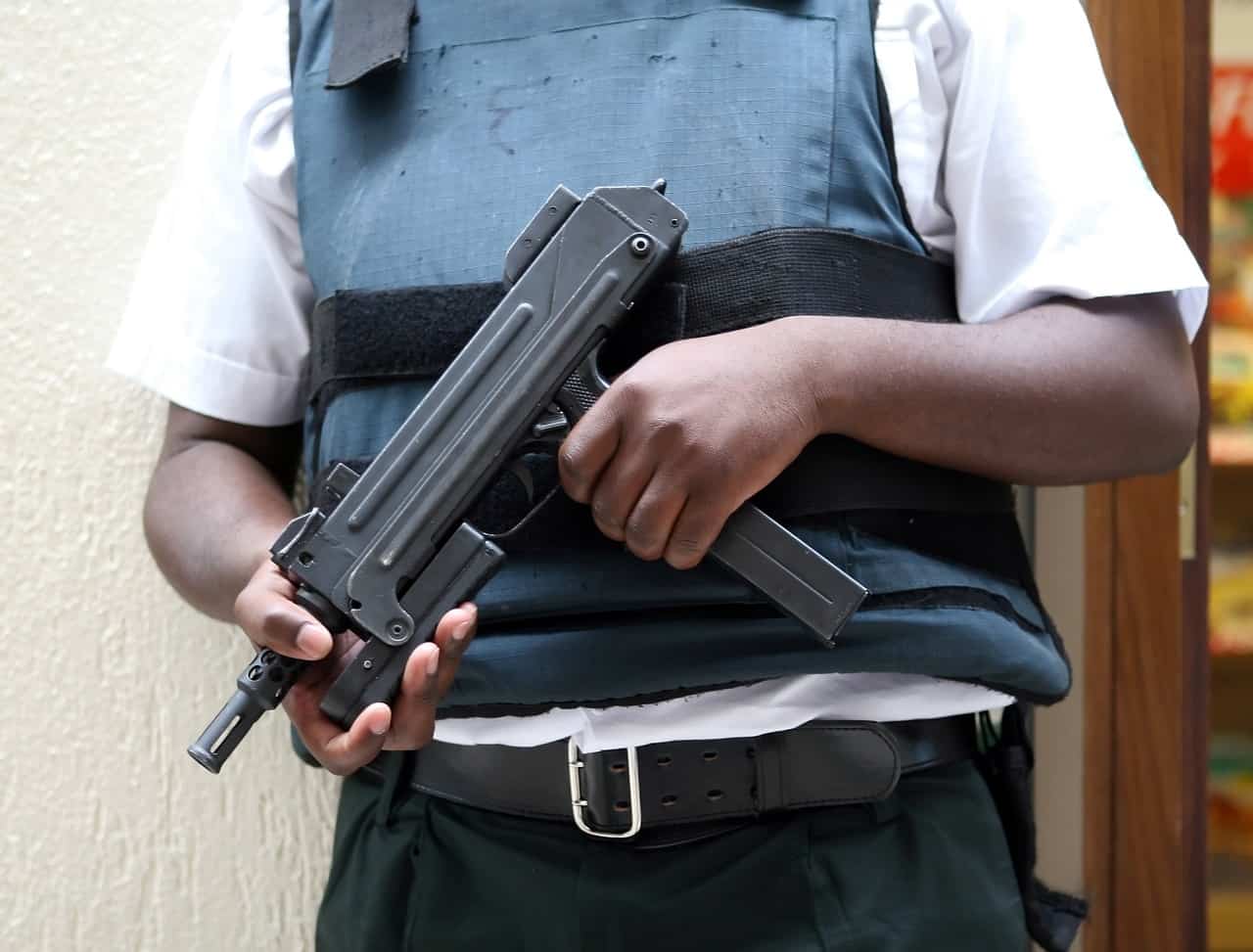When it comes to safeguarding people and property, security guards play a crucial role. However, not all security guards are created equal, and there’s a significant distinction between unarmed and armed security guards.
Imagine a scenario where a bustling nightclub in California hires both unarmed and armed security guards for a high-profile event. The unarmed security guards are visible at entrances, managing access and ensuring the safety of the guests. Meanwhile, the armed security guards discreetly blend into the crowd, ready to respond swiftly to any potential threat.
In this article, we’ll explore the differences between these two types of security professionals, from their roles and responsibilities to training, use of force, cost considerations, and more.
Roles and Responsibilities
Unarmed Security Guards serve as a visible deterrent and the first line of defense against potential threats. Their roles include:
- Surveillance and Patrolling: Unarmed guards are responsible for monitoring surveillance cameras, conducting routine patrols, and keeping a watchful eye on the premises to detect any suspicious activity. Training for these responsibilities can be obtained from various institutions, including local security academies.
- Access Control: They manage entry and exit points, verify credentials, and ensure that only authorized individuals gain access to restricted areas. Access control training programs are widely available and can be found through reputable security training centers.
- Communication and Reporting: Unarmed guards must have strong communication skills to interact with visitors, employees, and law enforcement when necessary. Reporting incidents accurately is a crucial aspect of their role, and there are specialized courses on incident reporting and communication provided by various institutions. Click HERE to read about Security guard report writing.
- Emergency Response: Unarmed guards are often trained in basic emergency response procedures, including evacuations and first aid. Training for these situations can be acquired from various organizations. Click HERE to learn more.
Training and Certification (California and U.K. Examples): In California, unarmed security guards need to complete 40 hours of training, which includes topics like legal powers and limitations, emergency procedures, and communication skills. Training can be obtained from accredited institutions.

In the U.K., training for Security Industry Authority (SIA) licensure includes modules like conflict management, physical intervention, and first aid. Prospective unarmed guards must complete the required training and obtain an SIA license.
Benefits:
- Cost-effective security solution.
- Less intensive training requirements.
- Serves as a visible deterrent to potential threats.
Cons:
- Limited ability to handle high-risk situations.
- Restricted in the use of force.
Armed Security Guards have a more robust set of responsibilities, including:
- Enhanced Security: Armed guards are deployed when a higher level of security is needed, such as for protecting valuable assets or individuals. Specialized training programs that include firearms handling are required.
- Use of Firearms: They are trained in the use of firearms and are responsible for handling and carrying lethal weapons safely. Firearm training is typically conducted by certified instructors at shooting ranges and specialized training centers.
- Immediate Response: Armed guards are prepared to respond to potentially dangerous situations swiftly and effectively. This requires comprehensive training in assessing threats and using firearms when necessary.
Training and Certification (California and U.K. Examples): In California, armed security guards undergo additional training on firearm safety and usage, totaling 14 hours. They must also obtain a Guard Card and a Firearms Permit from the Bureau of Security and Investigative Services (BSIS).
In the U.K., armed guards must complete specialized training and obtain the SIA Close Protection (CP) license for work in high-risk environments. Training providers accredited by the SIA offer courses in close protection.
Benefits:
- Ability to handle high-risk situations.
- Enhanced security for high-value assets or individuals.
- Potential for higher pay.
Cons:
- Increased training and certification requirements.
- Strict regulations and legal scrutiny regarding firearm use.
Use of Force
Unarmed Security Guards: Unarmed guards rely on non-lethal methods of force, such as verbal de-escalation techniques, restraining individuals when necessary, or using non-lethal weapons like pepper spray or batons. The use of force is generally limited to self-defense and protection of others. Comprehensive training in de-escalation and restraint techniques is crucial.
Armed Security Guards: Armed guards are trained to use firearms responsibly and only when justified. They undergo rigorous training on assessing threats and the legal implications of using deadly force. Any use of force is subject to strict regulations and legal scrutiny, emphasizing the importance of comprehensive training in use of force and legal considerations.
Cost and Budget Considerations
Unarmed Security Guards: Hiring unarmed security guards is often more cost-effective due to their lower training and equipment requirements. They provide an essential security presence without the added costs associated with firearms training and licensing. However, businesses must budget for their training and certification expenses.
Armed Security Guards: The added costs associated with firearms training, licensing, and insurance often result in higher hourly rates for armed security services. However, this cost increase reflects the enhanced security capabilities they bring. It’s essential to budget for the increased pay rate, training, insurance, and licensing costs when hiring armed guards.
In conclusion, the distinction between unarmed and armed security guards encompasses various aspects, from their roles and responsibilities to training, use of force, and cost considerations. Businesses and property owners must carefully assess their security needs and budget constraints when choosing the type of security guard that best suits their requirements.

